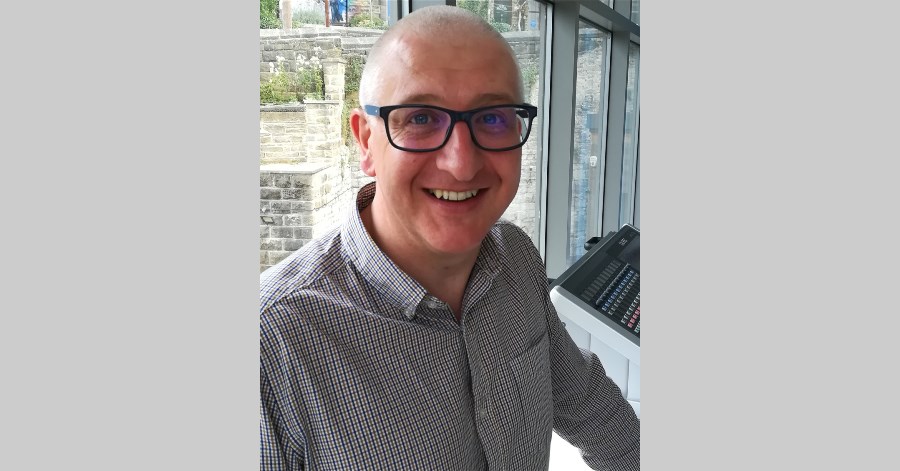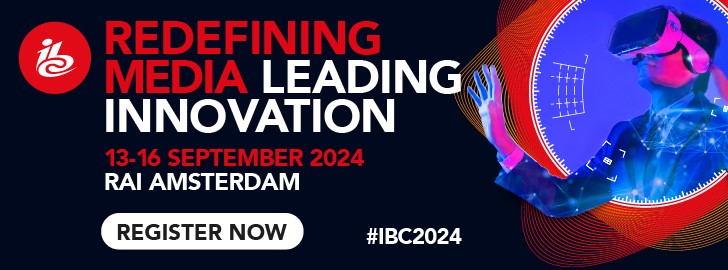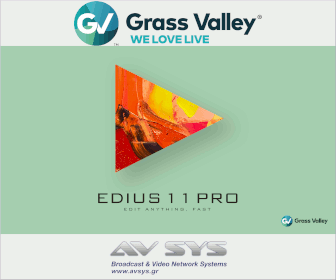An important reason for this interview is Calrec's highly successful route on the global broadcast-TV market, as well as the introduction of a quality audio console for the Radio Stations.
Text: Andreas Tzanakos
Images: Calrec’s Archive
So, yes we had the opportunity to discuss several things with Dave Letson, VP of Sales at Calrec Audio and learn more for the history, the technology and the products of this successful company.
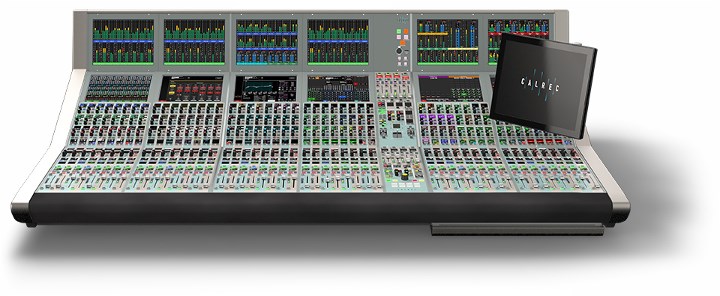
radiotvlink.gr: It is better to start our discussion by telling us a few words about your career so that our readers know some basic things about you.
Dave Letson: My name is Dave Letson, and I am Vice President of Sales for Calrec Audio. I have worked in the broadcast industry for over 25 years and I have spent the most of my time with Calrec. Mixing consoles has always been my baby having spent many years with Amek before joining Calrec in 2001.

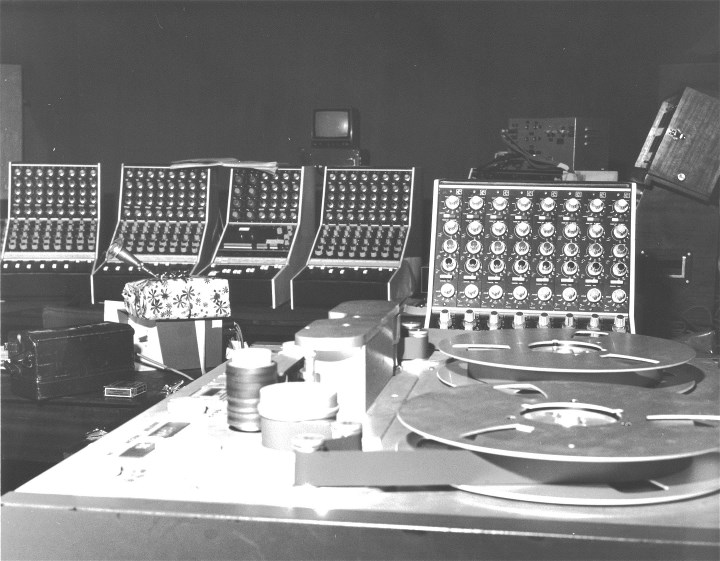
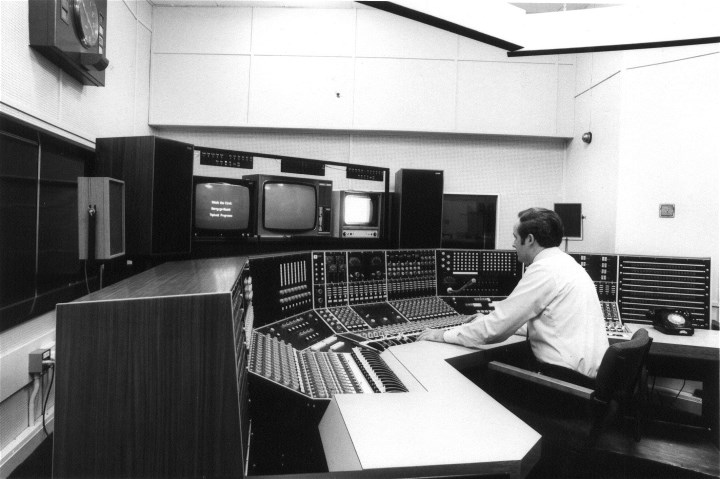
radiotvlink.gr: Please tell us about the history of Calrec Audio since it was founded 54 years ago and about its achievements in audio technology and networking-routing.
Dave Letson: Calrec is a leading designer and supplier of audio broadcast mixing equipment, relied on by the world’s most successful broadcasters. Formed as a microphone manufacturer in 1964, Calrec’s reputation for build quality, reliability and audio performance has made it an industry benchmark across the world.
At the heart of Calrec’s vocation is a passion to deliver the best sound using the most up-to-date techniques. Calrec leads the charge in innovation by refining current workflows and defining emerging trends. Since designing that first audio console in 1971, Calrec has strived to ensure its customers are one step ahead of the changing needs of the broadcast environment and has a history of technological world firsts:
1977: Calrec supplies the world’s first stereo broadcast console.
1978: Calrec launches the Soundfield microphone, the world’s first single point-source microphone capable of recording sound in three-dimensions for surround-compatible playback.
1981: Calrec supplies the world’s first digitally controlled assignable mixing console.
2007: Calrec launches Bluefin, an FPGA-based high-density DSP card, which permits real-time 5.1 surround mixing and processing. Bluefin is available as an upgrade to existing Calrec desks, and improves efficiency by a phenomenal 5000%. This technology is another world first for Calrec.
2009: Calrec unveils Bluefin2, a significant step up from Calrec’s pioneering work with FPGAs for real-time audio DSP processing. Bluefin2 increases DSP capacity to a market-leading 1020 channel processing paths.
2009: Calrec launches Hydra2, allowing the construction of complex routing networks with control software which organises all routing.
Calrec has developed a comprehensive range of mixing consoles and network products that integrate seamlessly via established and emerging industry standards. From the highly configurable Apollo and Artemis consoles to the powerful and compact Summa and Brio consoles, Calrec has a console for a wide range of users. Type R takes Calrec into the parallel industry of radio and is also one of the most configurable radio console available.
As the industry hurtles towards interoperability, standardised transport mechanisms and remote production, Calrec is ready to facilitate the transition and support the modern broadcaster throughout the process. Calrec’s IMPULSE core takes broadcasters into the next generation of broadcasting workflows incorporating IP networking technologies and immersive audio capabilities.
All Calrec products are designed, manufactured and tested at Calrec’s Nutclough Mill headquarters in Hebden Bridge, West Yorkshire, England.
radiotvlink.gr: Calrec, along with other well-known brands of professional audio belongs to the powerful Audiotonix Group. How this helps Calrec in developing new technologies and products for broadcast audio?
Dave Letson: Audiotonix owns a number of high-profile audio brands including Calrec, DiGiCo, Allen & Heath and SSL, and is a global market leader in the design, engineering and manufacture of professional audio mixing consoles. In fact, it has the largest specialised R&D team in the professional audio mixing console market.
Where it differs significantly from other groups is that each company is independent and manages its own brand and development. Each one is an expert in its field, as Calrec is in live broadcast.
There are some clear benefits - Audiotonix invest a huge amount of money into R&D, and that investment helps all the brands continue to innovate. As a company focused on mixing consoles, all the independent R&D teams have broadly similar concerns, and all speak the same technical language! This adds value and enables Calrec to bring product to market faster.
There is also common ground regarding purchasing, particularly electronic components, which gives all the brands additional buying power and helps keep lead times to a minimum.
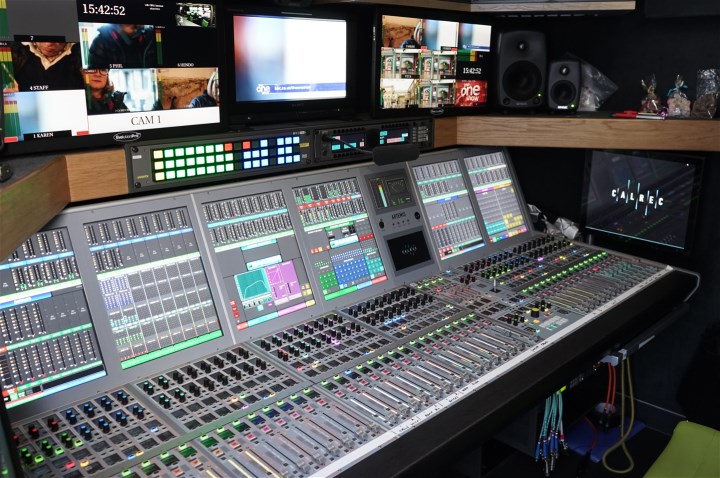
radiotvlink.gr: What is today the range of Calrec audio mixing consoles for the TV industry (TV Stations, Production Studios, OB Vans). What do you think are the main characteristics that distinguish these mixing consoles from the competition?
Dave Letson: Modern broadcasters demand many different functions from their mixing desks and no two companies have identical requirements. Calrec has developed a comprehensive range of mixing consoles that integrate seamlessly via established and emerging industry standards.
At the top end of the range there’s the highly configurable Apollo and Artemis models that allow the customer to tailor the surface and channel count to their requirements. Apollo provides unsurpassed processing power, with unrivalled resources of up to 1020 channels and can squeeze in more faders into a single footprint than any other console. Artemis provides a more compact surface when space is a premium and comes in four different DSP Channel packs to suit a range of productions.
For the price and space sensitive markets, Calrec’s Summa and Brio consoles are powerful and have a full broadcast feature set with a more compact form. All of these desks can be networked together to share resources and to create incredibly flexible broadcast solutions.
radiotvlink.gr: Please tell us about Calrec’s Hydra 2, the architecture and networking-routing solution. And what about the compatibility of Calrec’s products for AoIP and above all with AES67/Ravenna and Dante?
Dave Letson: Gone are the days when an audio console was required to simply mix audio. Increasingly consoles are integral components on wider networks, giving rise to adaptable workflows, shareable resources and the ability to be easily expanded.
In 2000, Calrec introduced Hydra, a low latency proprietary networking solution that redefined how Calrec users thought about workflows and infrastructures. This was superseded in 2009 by Hydra2 which brought greater control and flexibility to broadcast infrastructures and allowed the construction of complex routing networks with control software that transparently organises all routing.
Now the industry is pushing for a more integrated approach using open standards and established networking technology, and following the ratification of AES67 a clearer path has been defined by AIMS which is now guiding the industry towards true integration.
Calrec’s Type R radio console and new Impulse core are both designed around an IP backbone, and Calrec revealed two new IP products at IBC 2018: the H2-IP Gateway and the AoIP Modular I/O controller card. Both products are SMPTE 2110/AES67-compatible and expand the range of AoIP solutions from Calrec.
The H2-IP Gateway provides an interface between a Hydra2 network and an AoIP network. It also awards an extra control level that allows audio labels to be passed in both directions between the two networks along with control data. This gives Hydra2 users the ability to control gain of Calrec AoIP mic inputs, and AoIP users can control gain of Hydra2 mic inputs.
The Modular I/O Controller card that can operate in either Hydra2 or AoIP mode. The mode is selected via a simple switch on the card making it dual purpose, allowing for it to be used on either network. Not only will this make a tailorable AoIP I/O solution for the new Impulse core, it also fits into existing Modular I/O frames so units can be upgraded in the field.
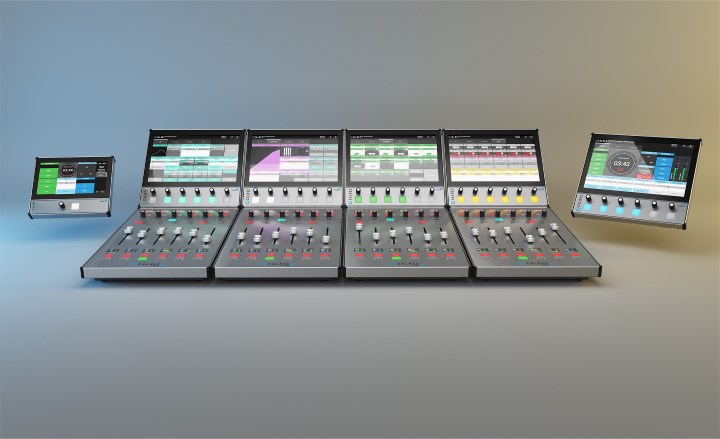
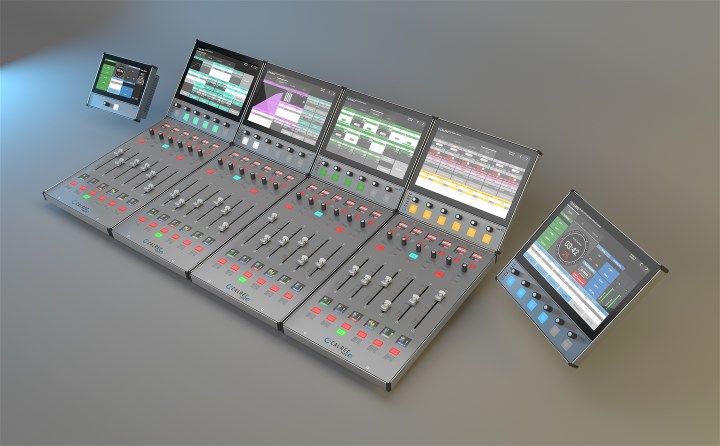
radiotvlink.gr: Recently, Calrec created a sound console for Radio Stations, the Type R. What are the capabilities it provides and what are its features should the Radio Broadcasters keep in mind before investing in a radio digital audio console?
Dave Letson: Type R is a brand new, modular, expandable, IP-based radio console. It utilises standard networking hardware and soft panels which can be tailored to operator needs.
With a simple 2U core with integrated I/O resources, a single core can power up to three independent mixing environments. Whether used as independent studio consoles, microphone processors or utility mixing, the ability to use multiple mixing engines combined with the flexibility of the AES67 compatible network, provide all the power you will ever need.
This industry shift to IP was instrumental in the design of Type R, with AES67 compatible audio transport and panel connectivity and industry standard NMOS discovery and control.
In radio, like television, every station works in a different way. Calrec wanted to design something that could work in a variety of hugely complex environments yet be simple and easy to use. Type R is highly configurable and modular, so it can be tailored to the requirements of the station and the talent. Once the soft panels and user-definable elements have been configured and locked down by the technical engineer, the simple GUI means that operating Type R is very easy. Different set-ups can be loaded quickly between shows, so everyone can feel comfortable operating it. This is a key difference between Type R and its competitors. The soft panels can be laid out to present just what the operator wants to see down to the individual control level.
This radio system is a modern and customer focused radio broadcast console that adapts to a station’s needs as its requirements evolve, and provides simple customization across networks, control protocols and surface personalization.
The key challenge for radio stations is to connect in a more personalized way with their audiences. Dynamic interaction with their listeners through social media, call-ins and visual radio are enabling radio stations to compete with the growth of streaming services. Radio presenters are a big attraction for audiences and the ability to configure and tailor the workplace environment to allow them to focus on what makes their show unique is becoming more valuable.
Type R has been designed to be adaptable and expandable for both hardware and software elements.
Calrec is a leading designer and supplier of audio broadcast mixing equipment, relied on by the world’s most successful broadcasters. Formed as a microphone manufacturer in 1964, Calrec’s reputation for build quality, reliability and audio performance has made it an industry benchmark across the world.
radiotvlink.gr: In your opinion, why broadcasters, OB services companies, TV studios should invest in Calrec Audio products?
Dave Letson: Unlike many console manufacturers, Calrec designs and manufactures equipment exclusively for broadcast. Broadcast customers have very specific requirements, and Calrec understands modern broadcast facilities.
Calrec products have broadcast features built in as standard, such as independent redundant hardware for critical systems, with hot pluggable cards and modules.
DSP resources is another example – there are no sharing of resources between input and output busses on Calrec’s Bluefin2 FPGA based DSP, so a “240 channel” console really does have 240 input channels, and this resource will never be depleted by adding more output busses. DSP resources really are available on all channels at all times.
Robustness, flexibility and narrow fader widths are also basic design principles – Calrec consoles can squeeze more faders into a given space than any other broadcast console available, which is especially valuable for outside broadcast trucks which have limited space requirements.
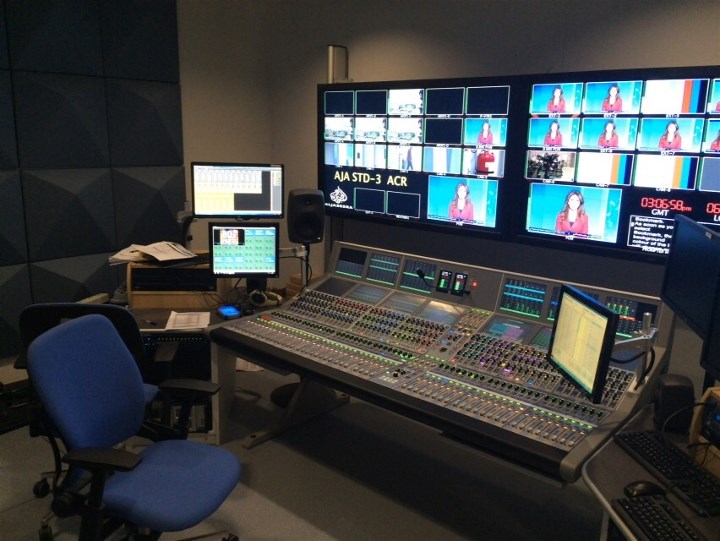
radiotvlink.gr: What is Calrec's policy regarding warranty and customer support after selling a product (software upgrades, training, maintenance and/or service in a rare-difficult situation)?
Dave Letson: Calrec’s reputation for reliability is unmatched in the broadcast industry. Despite this, broadcast infrastructures are made up of large, complex networks which incorporate a variety of different manufacturers and protocols. Introducing third party equipment to a networked environment, or updating software on that equipment, can sometimes introduce unexpected issues.
Calrec offers a comprehensive range of Support Contracts to give customers real peace of mind. Calrec’s vast experience with broadcast audio networks can help with fault diagnosis and can advise on the best course of action. New software features and guidance is always based on best practice and planning for software upgrades is available.

radiotvlink.gr: Please, tell us about the existing customers in Greece and Cyprus, as well as the future prospects of Calrec Audio with its new Distributor in Greece, BON STUDIO S.A .?
Dave Letson: Although Calrec has a large customer base around the world, it was not until 2018 that we sold our first Calrec console into Greece. The Summa console was purchased by INA TV Broadcast Services who are based in Athens and will use it for one of their new OB trucks.
We are very pleased to have the opportunity to work with BON STUDIO S.A.. whom we have been aware of for many years – they are very well known across all the pro-audio disciplines and particularly so in the Broadcast market.
We have a very aggressive product roadmap, and we’re looking forward to working with BON STUDIO to help us to create some momentum in Greece!
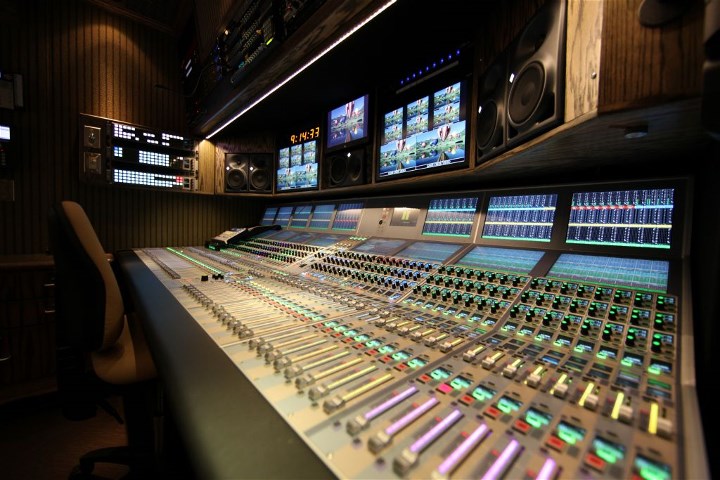
radiotvlink.gr: What’s the position of Calrec Audio on the global broadcast market? Please refer to some important customers.
Dave Letson: Calrec equipment is live on air in over 50 countries across the world, 24 hours a day, seven days a week. It is relied on by national and international broadcasters, colleges and universities and in outside broadcast trucks. In fact, in the US Calrec are in 62% of outside broadcast truck – the supplier in second place is in 10% of operating trucks.
Some of Calrec’s customers include; Sky, BBC, Telegenic, NEP Visions, dock10, CTV, Timeline, London Studios, CNN, ITN, Pinewood, QVC, Formula E in the UK; Channel 10, Channel 7, Fox Sports, NEP in Australia; Cinevideo, RAI, Telerecord in Italy; NBC, NBC Olympics, CBS, ESPN, Pac-12, NEP Denali, Game Creek, ABC, F&F, Lyon Video, Univision, NEP Supershooters, MLB Network, CNBC, Dolby, E!, Fox News in the US; AMP, L’equippe, QVC, ARTE in France; Hong Kong Jockey Club, iCable, TVB, Vui TV in Hong Kong; NHK, NTV, Fuji Tv, KTV, TV Tokyo in Japan; Televisa, TDN in Mexico; TVNZ, Mediaworks in New Zealand; Al-Jazeera in Qatar; NTV-Plus, TTC Ostankino, Russian Public Tv, First Channel International in Russia; MBC, KBS in Korea; Mediaset, TILT, Valencia TV in Spain.
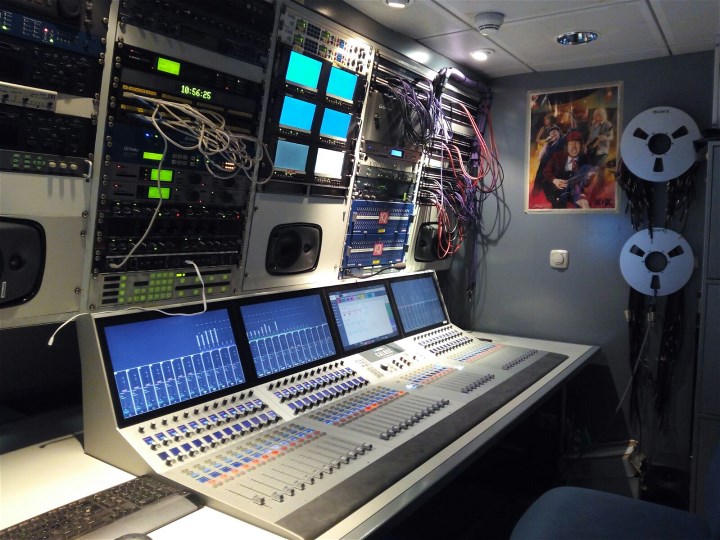
radiotvlink.gr: What are the company's future prospects for the global market? What else can we expect, technologically, but also new products from Calrec Audio?
Dave Letson: The broadcast market is changing at an unprecedented rate, both in terms of the technology to produce content and the way that viewers consume it. We’ve seen the standards for IP audio and video transport being clearly established – after a huge amount of work – with the SMPTE ST2110 suite of protocols. Meanwhile, the industry, via trade bodies and manufacturers, is working hard to implement NMOS, which defines audio and video equipment discovery and registration across IP networks.
Calrec is across all these developments in its bid to help customers adapt to this changing environment, and to help new customers from an increasing number of content providers – including FAANGS – create efficient workflows.
At NAB Calrec expanded its range of virtual production products, including the successful RP1 remote production unit, and gave the Impulse IP core its US debut.
Beyond that, the product roadmap is very busy, and Calrec will continue to innovate to give broadcasters the tools they need to be creative in this developing landscape!
radiotvlink.gr: Thank you very much for this fruitful discussion. Our special thanks to Bon Studio SA for its contribution to the realization of this Interview.
Dave Letson: You’re welcome!
Info: www.calrec.com & Bon Studio S.A.* & https://eshop.bonstudio.gr
*Distributor For Hellas & Cyprus



